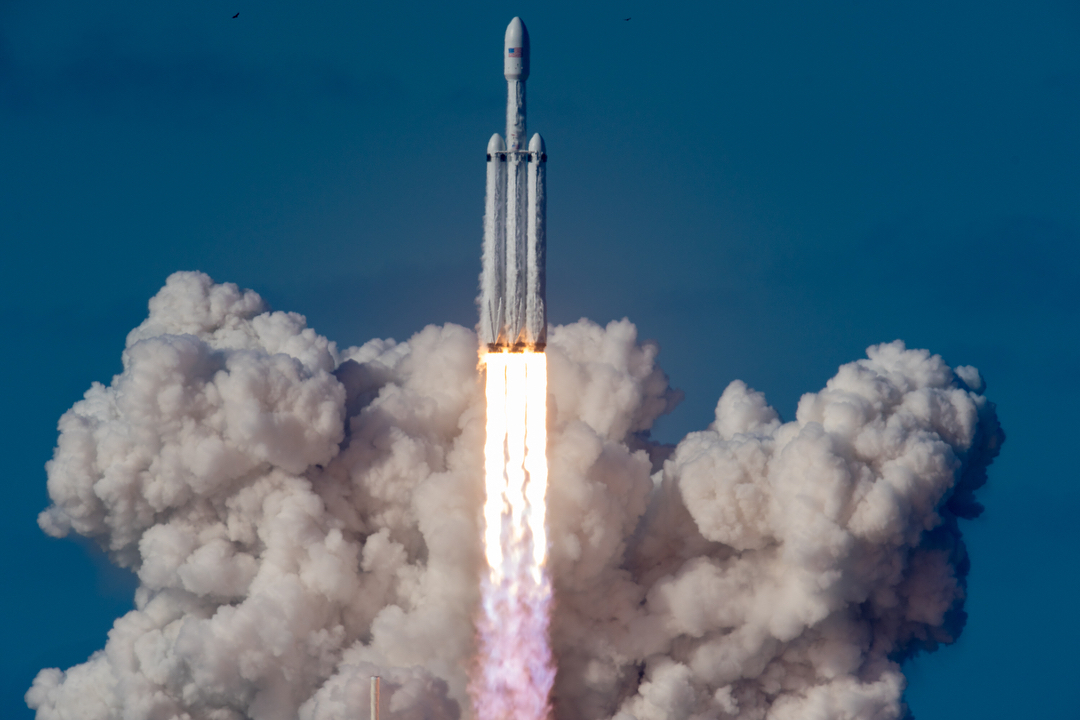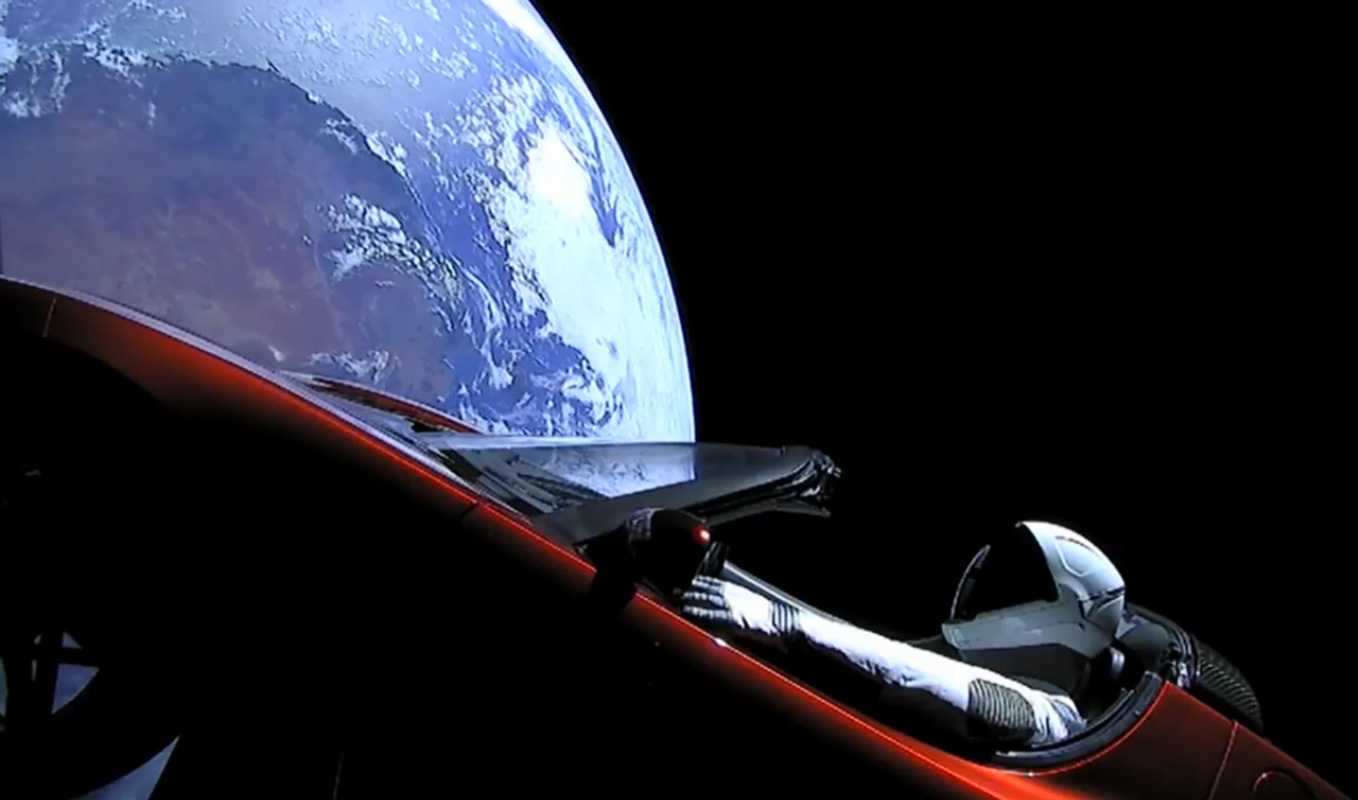
Five years ago today (Feb. 6), SpaceX's brawny Falcon Heavy rocket left Earth for the first time ever.
That debut mission, which lifted off from NASA's Kennedy Space Center in Florida, was no ordinary test flight. For starters, it crowned the Falcon Heavy as the most powerful rocket in the world, a title it held until NASA's Space Launch System flew this past November on the Artemis 1 mission.
The payload was quite memorable as well: The big new rocket sent SpaceX founder and CEO Elon Musk's red Tesla Roadster, with a spacesuit-clad mannequin named Starman in the driver's seat, into orbit around the sun. (Since this was a test flight, SpaceX didn't put an operational satellite on board. But Musk decided to make the dummy payload an interesting one.)
Starman and his ride are still cruising through deep space, by the way. But they're headed for a violent end: An orbit-modeling study found that the car will eventually crash into Venus or Earth, probably in the next few tens of millions of years.
Related: SpaceX's Epic Road Trip Photos: Starman rides a Tesla Roadster in space
More: SpaceX's 1st Falcon Heavy launch in photos
The Falcon Heavy consists of three strapped-together first stages of SpaceX's workhorse Falcon 9 rocket, which are reusable; they're designed to make vertical landings shortly after liftoff and fly again after some refurbishment. The Heavy's central booster is topped by an upper stage, which carries the payload.
The Falcon Heavy's 27 first-stage Merlin engines generate a whopping 5 million pounds of thrust at liftoff, which allows the huge rocket to carry up to 70.3 tons (63.8 metric tons) of payload to low Earth orbit (LEO) on each mission, according to its SpaceX specifications page. The Falcon 9, by comparison, can deliver about 25.1 tons (22.8 metric tons) to LEO.
Get the Space.com Newsletter
Breaking space news, the latest updates on rocket launches, skywatching events and more!
The Falcon Heavy now has a total of five flights under its belt, all of them successful. The rocket lofted the Arabsat-6A telecom satellite to orbit in April 2019, then launched a mission for the U.S. Air Force two months later.
The Heavy was then idle for about 40 months, a gap attributable mostly to customer delays in getting their satellites ready. In November 2022, the rocket roared back into action, launching a handful of satellites for the U.S. Space Force. The Heavy flew again on Jan. 15 of this year on another Space Force mission — and it likely won't be long before we see another liftoff.
"Falcon Heavy has completed five launches to date, and could fly up to five missions this year," SpaceX said via Twitter today.

SpaceX is currently gearing up for the debut of another big rocket, by the way, one that will be more powerful than any vehicle that's ever flown — Starship, which the company is developing to take people and cargo to the moon and Mars.
The latest Starship prototype aced its first-ever fueling test on Jan. 23, and it could launch to orbit for the first time as early as next month if remaining tests go well, Musk said recently.
Mike Wall is the author of "Out There" (Grand Central Publishing, 2018; illustrated by Karl Tate), a book about the search for alien life. Follow him on Twitter @michaeldwall. Follow us on Twitter @Spacedotcom or Facebook.
Join our Space Forums to keep talking space on the latest missions, night sky and more! And if you have a news tip, correction or comment, let us know at: community@space.com.

Michael Wall is a Senior Space Writer with Space.com and joined the team in 2010. He primarily covers exoplanets, spaceflight and military space, but has been known to dabble in the space art beat. His book about the search for alien life, "Out There," was published on Nov. 13, 2018. Before becoming a science writer, Michael worked as a herpetologist and wildlife biologist. He has a Ph.D. in evolutionary biology from the University of Sydney, Australia, a bachelor's degree from the University of Arizona, and a graduate certificate in science writing from the University of California, Santa Cruz. To find out what his latest project is, you can follow Michael on Twitter.
-
Rocketguy53 We lived on north Merritt Island back then so I drove over to KARS park which is due south of Pad 39A about 15 miles or so. It was jam packed that day and a beautiful day for the first launch. It was amazing to see the now largest launch vehicle in the world fly the first time and then the two side boosters land right across the river from the KARS viewing site. Sadly we no longer live in Merritt Island so I have to watch launches online or TV.Reply









